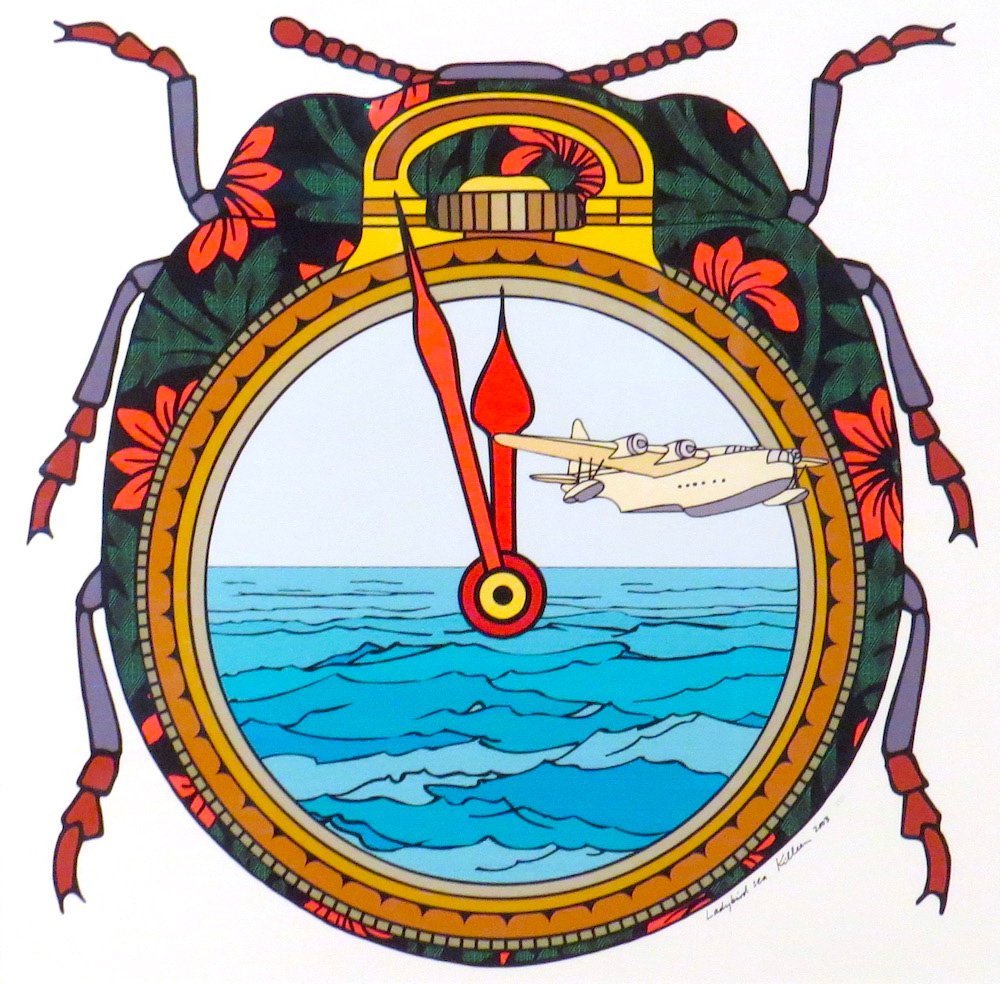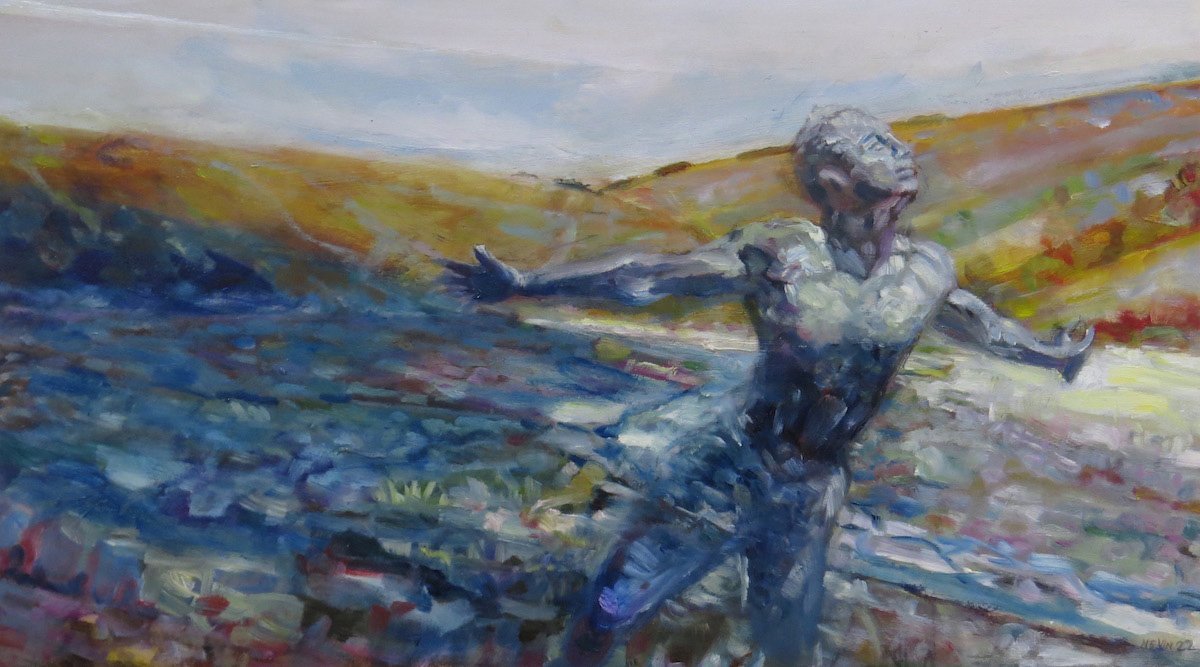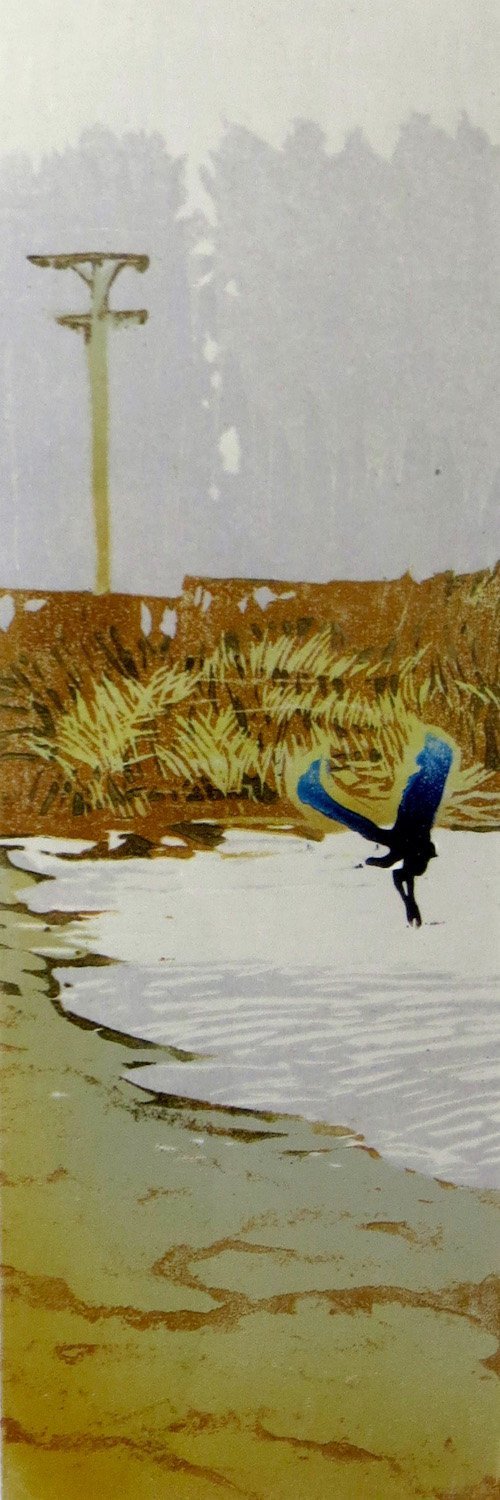
(Brett McDowell Gallery)
Brett McDowell Gallery is showing an exhibition of works from Richard Killeen’s 2003 "Ladybird" series.
These pieces show elements of the silhouetted and computer-morphed imagery for which the artist is perhaps now better known, and are important both in terms of their exploration of the artist’s private symbolism and in terms of their means of production. As some of the first works by the artist using computer printing technology, they pave a way towards much of Killeen’s current oeuvre.
The works, presented on framed paper and on unstretched canvas, use the body of the central figure of the ladybird as an internal frame, surrounded simply by a plain white surface. Within the outlines of the insect’s body lies a mind-map of forms, from the rugged mountain and real and imaginary bird silhouettes of Landscape Interior to the fiercely busy domestic whirlwind of Interior Lost and Found 2/3. As with the Ancient Egyptian scarab beetle, the ladybird becomes a manifestation of existence, containing the wonders of the universe.
The artist makes skilful use of line: the broad, stained glass-like borders of the insect bodies are leavened by Killeen’s use of fine detail on features such as clock faces and animals which add an extra dimension to the art.

(Moray Gallery)
"A 60-70 Vision" is a joint exhibition by Annie Nevin and John Z. Robinson which largely focuses on the human form.
Robinson’s contribution to the exhibition contains three heavily stylised inkjet print figures, but is largely dominated by a welcome return to his strong, heavily expressionistic acrylic paintings on board. The artist has returned to one of his favourite colours, a rich cadmium red, to produce a series of nudes in which the figures emerge from an oppressive yet somehow welcoming background. His other works on display include two joyfully bright triptychs, each of Central Otago scenes.
Robinson’s works are nicely complemented by a series of acrylics on board by Annie Nevin. Nevin has also concentrated on the figurative, using characters from folklore to create a series of pieces which have subtle themes of the need to protect the environment and in imagining how these figures may have evolved over the centuries. An urbane Green Man and a modest but still earthy Sheela na Gig are full of life in their surroundings, and a wryly humorous Shakespearean Nick Bottom adds a light note to the exhibition.
The two series of works complement each other very nicely, producing a warm and enjoyable display.

(Bellamys Gallery)
At Bellamy’s Gallery, an exhibition of poetry and prints recalls a South Otago flood and its aftermath.
The poetry, by Richard Reeve, is displayed on a series of panels, each paired with a narrow woodcut by Manu Berry. On an opposing wall of the gallery, Berry displays further works in monoprint, also inspired by the poetry, with each work being titled for one of the lines of the poem.
Reeve’s poetry effectively captures the heavy, too-solid weight of drenched clay, the inundation of lake by river, and the ineffectiveness of human infrastructure against sodden nature. Over it all, the perennial waterfowl, the pūkeko, holds sway. These works have a gentle softness, provided by the artist’s impressive use of graduated pastel tones.
Berry’s prints not only perfectly complement the words, but provide us with rich illustration in a series of glimpses of the land. The woodblock prints form windows on the pūkeko habitat, the birds flying low and sluggish over the rippling water. In the monoprint works, the falling rain and leaden clouds leach colour from the world, and become the primary subject of images such as Winking at the Highway. Hope for a future, fairer day remains, in the truncated rainbow of Flowers of Rain.












